Summer raspberry care instructions for beginners and advice from experienced gardeners
It is possible to get a good harvest of raspberries only with proper care. It is a capricious berry that requires care throughout the season, especially during the summer months. So that the work is not wasted, you need to take into account the characteristics of the plant, the rules for caring for it and the timing of the procedures.
The content of the article
What care is needed for raspberries in summer
Caring for raspberries in the summer requires a careful approach. During fruiting, the plant is given a lot of attention. Watering alone is not enough to produce a crop. Raspberries need weeding and dressing, loosening and mulching, and pruning unnecessary stems.
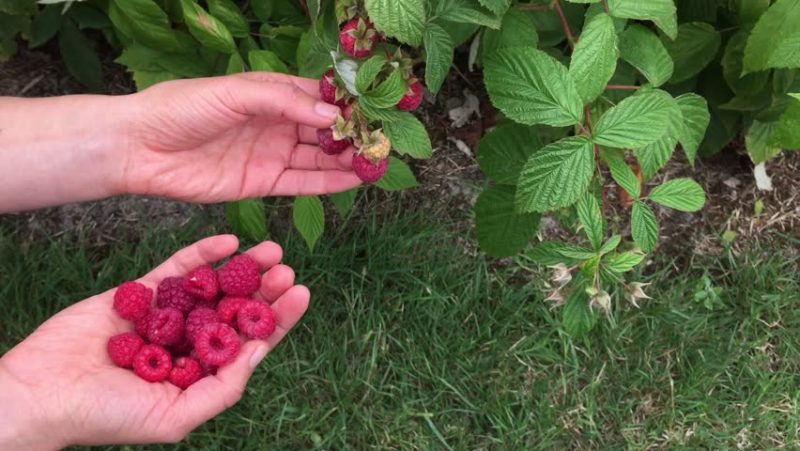
How to properly care for raspberries in summer
Each summer month is a stage of caring for the bushes, and if the basic rules are not followed, the gardener will receive a meager harvest.
Watering
The plant needs moisture during active flowering and during the period when fruits are formed and ripen. Water the raspberries 1-2 times a week. In order for the roots to be saturated with moisture, it must penetrate 25-30 cm into the ground. Frequent and shallow watering will not benefit the plant.
Important! During a drought period, the soil in the area where raspberries grow is moistened daily.
Watering methods for raspberries:
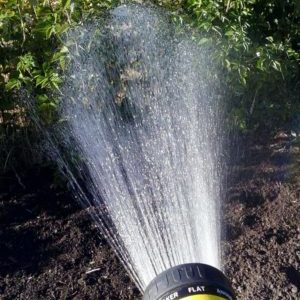
- Along the rows. Around the bushes, soil is poured to a height of 15 cm and water is directed into the formed depressions.
- Humidification from a hose. Such watering is plentiful, but water gets into the aisles.
- Drip irrigation. The moisture is supplied directly to the plant's root system. The horticultural market offers a wide range of drip irrigation systems. You can do them yourself.
Top dressing

With a lack of nutrition, there will be few berries, they will turn out to be small and tasteless. The appearance of the raspberry tree will tell you which feeding he needs.
With a lack of magnesium and iron, the leaves become yellowish or yellow with green veins. With a lack of phosphorus, the shoots become thinner and grow poorly. If the leaves curl up and dry up, then the plant lacks potassium.
With a lack of nitrogen, the leaves become small and dull. With its excess, the green mass is abundant, but the berries are showered unripe.
In summer, the raspberry plant is fed with mineral and organic fertilizers.
Mineral fertilizers for raspberries:
- Phosphorus: superphosphate, potassium metaphosphate, ammophos.
- Nitrogen: potassium nitrate, calcium nitrate, azofoska, ammonium sulfate, ammonium nitrate.
- Potash: potassium sulfate, potassium salt.
- Complex: Florovit, Aktiv, Ekolista.
Basic organic fertilizers for raspberries:
- chicken droppings;
- mullein;
- wood ash;
- biohumus.
Pruning

Summer raspberry pruning is carried out to renew the shrub. Extra branches take away the strength of the plant. This affects the quantity and quality of the berries.
In summer, raspberries are pruned after harvest. At this time, the shrub grows green mass and new shoots. The sooner you cut off underdeveloped and diseased branches, the better the bush will develop. Pruning also stimulates the root system.
Raspberry shoots are cut off at the base, leaving no hemp. Withered tops are affected by pests. They are shortened to the first healthy leaves.
Young summer raspberries the stems are shortened to 25 cm and the emerging flowers are cut off.New shoots are thinned out, leaving the strongest ones.
Reference. For autumn raspberry varieties, pruning is carried out for thinning and sanitary purposes.
Thinning
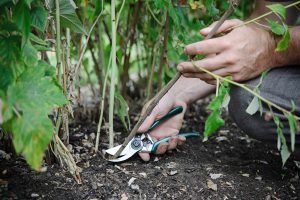
Raspberries reproduce actively due to their strong root system. An increase in additional roots is noted every year. They take useful elements from the main bush and from the soil.
How thickening affects raspberries can be seen from next year's harvest. It ripens poor and poor quality. Also, extra shoots create a favorable environment for the development of microbes.
First of all, the shoots of the first year are removed. It is cut off entirely, right next to the ground. After harvesting, the branches that had berries are removed. Be sure to remove the growth that appears from the roots. Strong shoots are cut with a shovel to a depth of 8-10 cm in the soil.
Protection against diseases and pests
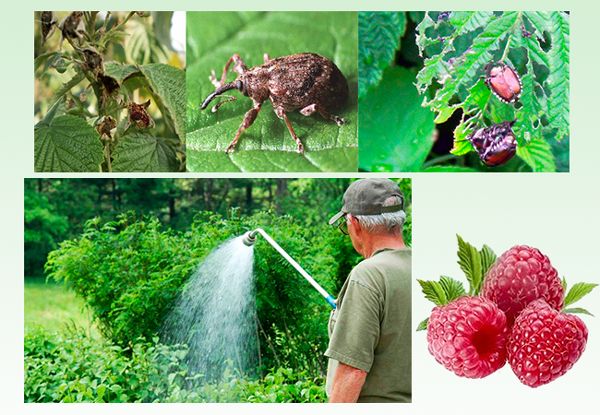
Raspberries are susceptible to diseases and pests. This leads to a lack of harvest, and sometimes to the death of the bushes.
The main insect pests of the raspberry tree:
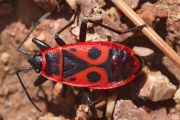
- raspberry mite;
- weevil;
- redclop;
- raspberry sawfly;
- raspberry fly;
- raspberry beetle.
Insects destroy the leaves, buds, flowers and fruits of the plant. Chemicals are considered the most effective means of pest control. Copper and iron vitriol, urea, Bordeaux liquid have proven themselves well. The drugs are used strictly following the dosage indicated in the instructions.
From sparing agents, ammonia (60 g per 1 bucket), tar (for 15 liters of 3 liters of tar), soda with mustard (for 6 liters of water, 20 g of mustard and 80 g of soda), boiling water (spray the bushes with care so as not to damage the roots).
Raspberries are also attacked by fungi, bacteria and viruses. Spores of fungi are very volatile, they are carried by insects, animals, precipitation, wind. Bacterial infections enter the plant through mechanical damage. Viruses can be transmitted by wind-blown pollen from diseased plants.
The main diseases of the raspberry tree:
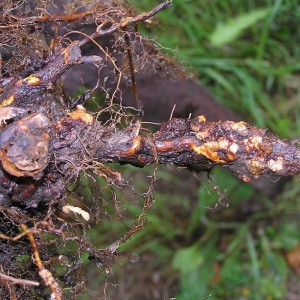
- purple and white spotting;
- anthracnose;
- rust;
- bacterial root cancer;
- infectious chlorosis (jaundice);
- mosaic;
- curliness.
Fungal diseases are treated with fungicides and Bordeaux liquid. From effective drugs are suitable "Kuprozan", "Nitrofen", "Topaz", "Fundazol".
They get rid of bacterial cancer by introducing superphosphate and a mixture of ammonium sulfate with potassium salt into the soil.
There are no 100% effective drugs for the treatment of raspberry viruses. The affected bushes are dug up and burned.
Reproduction
In summer, raspberries are propagated by cuttings.
Take green cuttings from root suckers. Young shoots are cut off and cuttings 7-8 cm long are harvested from them, 2-4 buds are left on them. Cut off the shoots in the ground at a depth of 3-4 cm.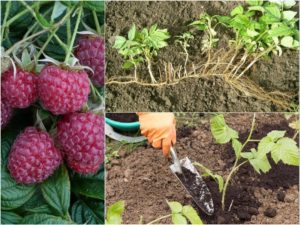
Further, at the lower ends of the cuttings, 4-5 longitudinal cuts are made 3 cm long. The distance between the cuts should not exceed 4 mm.
Prepared cuttings are placed in a root stimulant for 12 hours. Experienced gardeners recommend the drug "Kornevin". The solution temperature should not fall below + 18 ° C.
Then the cuttings are planted in the ground, greenhouse or greenhouse. The potting mix should be prepared, nutrient-rich and well-drained.
The composition of the potting mix for raspberries:
- ½ bucket of forest land;
- 1 bucket of peat;
- 1 bucket of sand.
Cuttings are planted 10-15 cm apart and watered abundantly.
The greenhouse maintains a temperature of + 25 ° C and a humidity of 90-92%. Under these conditions, the cuttings take root within 3-4 weeks.
Reference. For reproduction, it is better to take cuttings from bushes that have yielded a bountiful harvest.
Raspberry care in June
For those who do not know how to care for raspberries in June, let's say that the most important element of this month's care is the rationing of shoots. In mid-June, the plant forms basal shoots. With a shoot height of up to 40-50 cm, they are normalized. Up to 6-8 strong branches are left on the bush, located closer to the mother plant.For shoots up to 60-90 cm high, pinching is done - 4-5 cm are cut off from the top.
Timely watering is important in June. Drying out of the soil is not allowed. It is better to use drip irrigation. In early June, the plant is fertilized with organic matter - 5 liters of solution per one bush.
In July
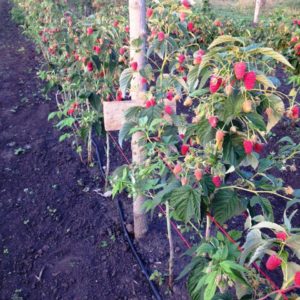
Raspberries are harvested in July. It is recommended to do this once every 2 days. Spoiled fruits are collected in a separate container.
Watering in July, as well as in June, is mandatory. The bushes need moisture to pour berries. In extreme heat and drought, the raspberry tree is watered every 3 days.
Also, the aisles are mulched, and the rows are sprinkled with compost or humus to curb the growth of weeds. Sprouted weeds are removed, small shoots are cut out.
Important! Collected spoiled berries must not be thrown on the ground. They may contain raspberry beetle larvae.
In August
After harvesting in August, the fruit-bearing shoots are removed, cutting them off at ground level and leaving no stumps. Leave 2-3 strong shoots on each bush.
From dressings in August, fertilizers based on phosphorus and potassium are applied. Also this month it is required to loosen the soil well and process the raspberry fungicides and insecticides, including under bushes.
Features of summer care for raspberries, depending on the region
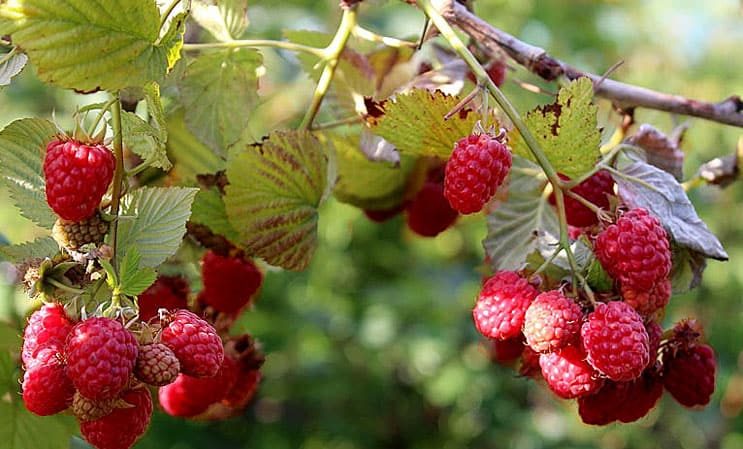
Depending on the climatic conditions in different regions, caring for raspberries has its own characteristics.
For central Russia choose varieties that give a more plentiful and high-quality harvest:
- Crane;
- Meteor;
- Orange miracle;
- Yellow giant;
- Brigantine.
Due to frequent rains in the middle lane, watering of the bushes is reduced. Loosening the soil is often replaced by mulching.
The Urals have their own peculiarities of berry care. In this climate, winter-hardy varieties are used:
- Bryansk miracle;
- Zorenka Altai;
- Penguin;
- Diamond raspberry.
When growing raspberries in Altai, the soil must not dry out.
In Siberia, raspberries are planted in shady or semi-shady flat places. The soil should be loose, enriched with organic matter. An excess of manure is not allowed.
Raspberry varieties for Siberia:
- Lel;
- Barnaul;
- Patricia;
- The Little Humpbacked Horse.
Features of caring for different types of raspberries
Repairing raspberries it is necessary to regularly feed with phosphorus-potassium fertilizers and water as the soil dries up. The plant does not tolerate excess moisture. Prune this species in the fall or early spring.
Yellow raspberries are planted in sunny areas, on light loamy or sandy loam soils. The plant does not tolerate stagnant moisture and cold winds. Fertilizers are suitable for phosphorus, nitrogen, iron, manganese.
How to care before fruiting for a good harvest
To obtain a good harvest, raspberries are provided with timely feeding, abundant watering and pruning young shoots. Be sure to mulch the ground and tie up the bushes. Raspberries need protection from pests. All these measures provide good harvest.
Before the start of the formation of berries, nitrogen and potash fertilizers are applied. During the fruiting period, organic matter is used: humus, manure, infusion of bird droppings, wood ash.
The first post-harvest activity is raspberry pruning. Then the plant is fed with organic matter or mineral fertilizers. Watering the bushes continues until the onset of cold weather and spray from pests.
Preparing raspberries for cold weather
Raspberry is prepared for wintering in the fall: they remove fallen leaves, dig up the soil and apply organic fertilizers... To make the culture easier to survive the winter, it is watered abundantly in the fall.
The remaining insect pests are destroyed by means such as "Fufanon" or "Actellik". After the leaves fall on the bushes, old stems are removed.
Tips from seasoned gardeners
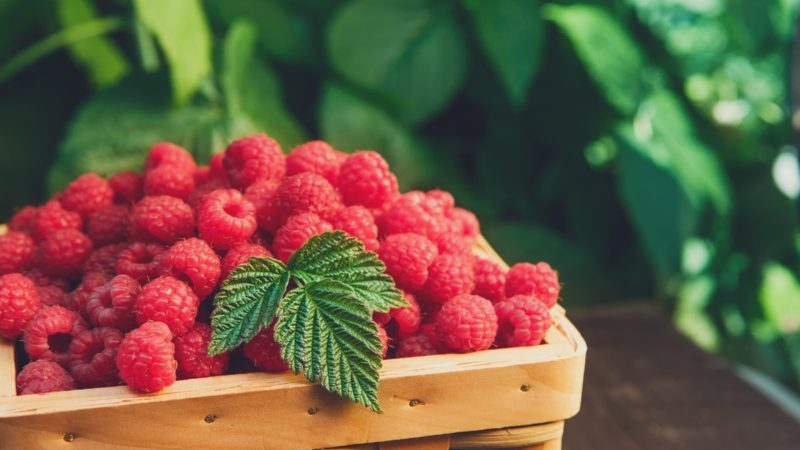
Professionals willingly share their secrets:
- Lots of light.
- Down with the young growth.
- More mulch instead of loosening.
- Abundant watering.
- Maximum feeding.
- The use of biological products for the destruction of pests.
- Removing old branches.
These measures ensure a good harvest regardless of the raspberry variety and growing region.
Conclusion
The raspberry harvest is the joy of every gardener. To enjoy the flavor of the berries, be prepared to provide the plant with timely and proper care. Stock up on the right fertilizer, grooming tools, and patience. Then in summer your table will be decorated with fresh fragrant berries, and in winter a jar of raspberry jam will raise your mood and vitality.